From Bottlebrush to Little John, or the story of a Dwarf Plant
by Alex Butova, the Witch of Herbs and Cats
Alexandra Butova is our columnist, journalist, and photographer, living in Riga, Latvia. She has has been with TopTropicals since Day One (2002), writing about magic plants, travel, and of course cats - from the CatNation she belongs to. Alex is in charge of TopTropicals.ru website.
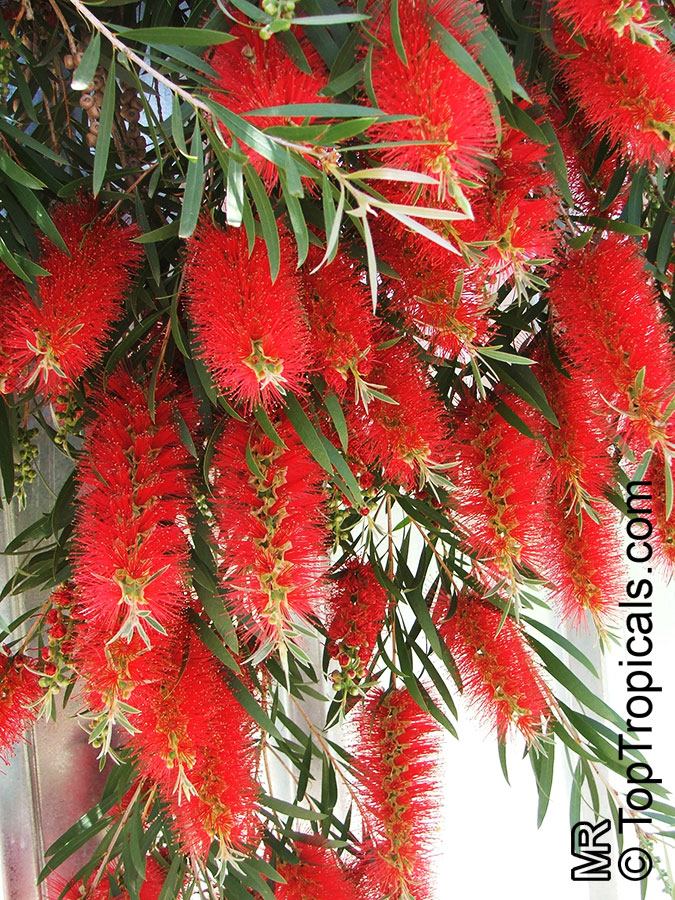
From Bottlebrush to Little John, or the story of a Dwarf Plant
...Little John, Bottle John lived on a hill
And a happy little man was he
And he won the heart of a little mermaid
Who lived in the deep blue sea…
...This plant was originally selected as a chance seedling in the 1980s by Ken Dunstan of Alstonville, New South Wales and was also called Callistemon Alstonville Dwarf, Tom Thumb and, at last, Little John. They said that the choice of this name was the song "Little John, Bottle John" by the American singer and songwritter Terry Grosvenor on lyrics by Laura E. Richard. Little John was the 1986 Shrub of the Year in Australia and was originally introduced as a plant that only grew to 3ft tall...
Bottlebrush... Bottle washing brushes... Nowadays, it is hard to imagine a more outdated concept! For reuse, all glass containers have been cleaned industrially for many years. Young people have never even heard of, especially used, such a thing. Nevertheless, Bottlebrush not only lives, but is often used by many people. In today's world, Bottlebrushes are not brushes at all, but... beautiful ornamental plants!
What are those plants? And here they are!
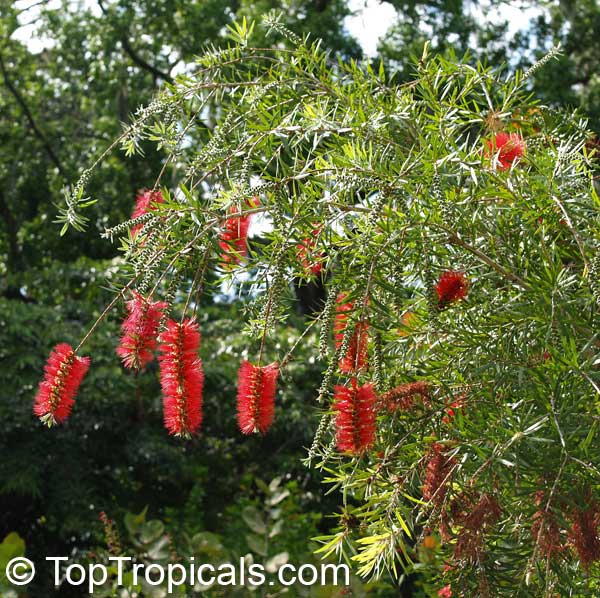
Callistemonis agenusofshrubsin the familyMyrtaceae. The entire genus is endemic to Australia but widely cultivated in many other regions and naturalised in different locations. Their status as a separate taxon is in doubt, some authorities accepting that the difference between callistemons and melaleucasis not sufficient for them to be grouped in a separategenus.
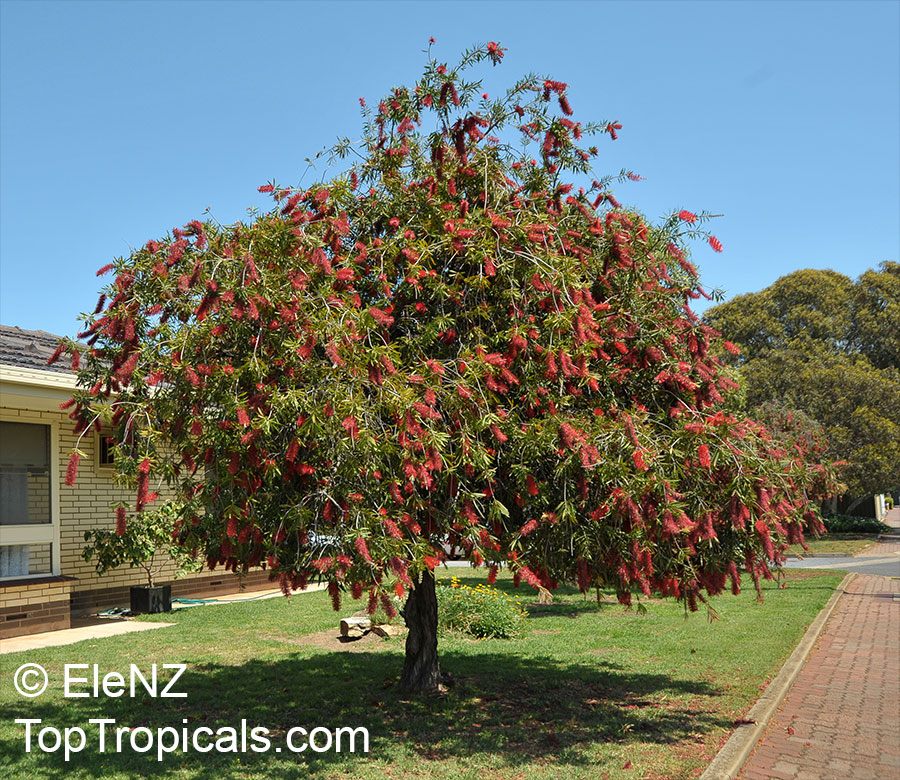
The genusCallistemonwas first formally described in 1814.In his description was noted that the genus includes “those species ofMetrosiderosthat have inflorescence similar to that ofMelaleuca, and distinct elongated filaments. Nevertheless, most authors had preserved the distinction between the two generaCallistemonandMelaleucauntil 1998. Many commercial nurseries continue to use the name Callistemon. The genus was named using the Greek words kallos meaning "beautiful" and stemon meaning "stamens" in reference to the long conspicuous and colorful stamens that characterize the flowers of this genus.
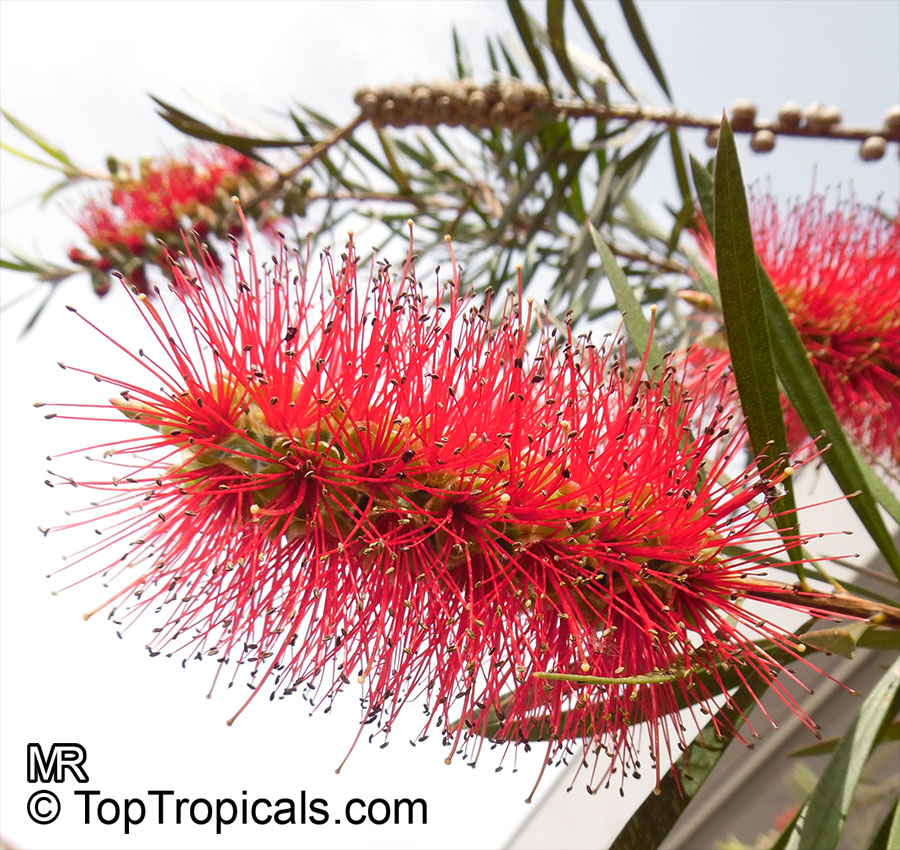
Callistemonspecies have commonly been referred to asBottlebrushesbecause of their cylindrical, brush-likeflowersresembling a traditional bottle brush.
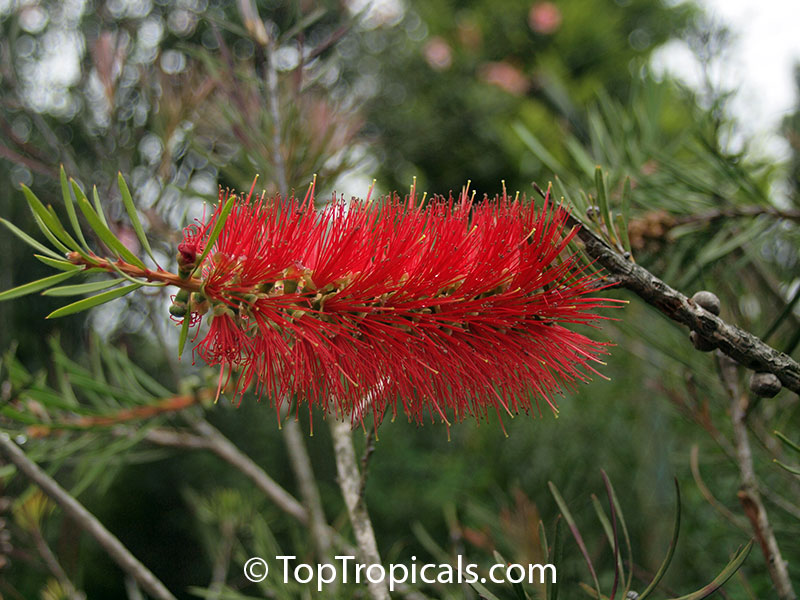
They are mostly found in the more temperate regions of Australia, especially along the east coast and typically favor moist conditions so when planted in gardens thrive on regular watering. However, two species are found inTasmaniaand several others in the south-west ofWestern Australia. At least some species aredrought-resistant and some are used in ornamental landscaping elsewhere in the world. They have been grown in Europe since a specimen ofCallistemon citrinuswas introduced toKew Gardensin London byJoseph Banksin 1789.
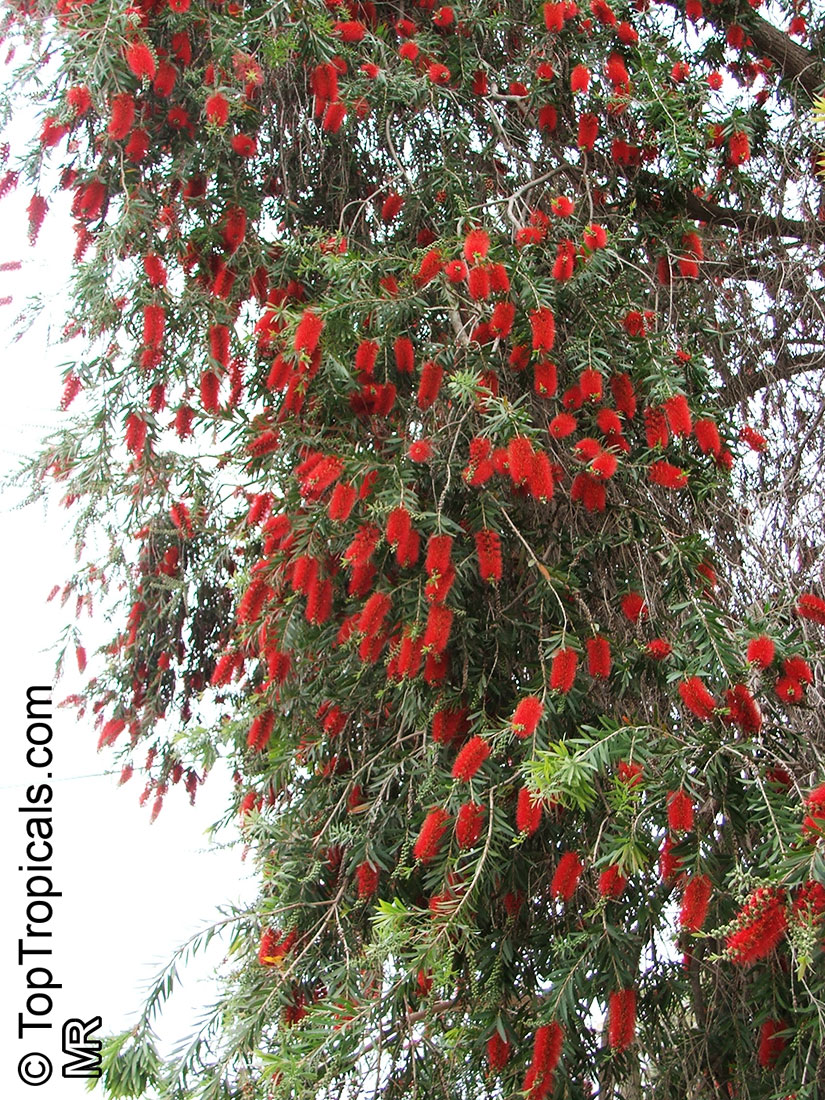
Flowering is normally inSpringand earlySummer(October–December), but conditions may cause flowering at other times of the year. Very showy flower spikes of bottlebrushes form made up of a number of individual flowers. The pollen of the flower forms on the tip of a long colored stalk called a filament. It is these filaments which give the flower spike its color and distinctive 'bottlebrush' shape. Flower heads vary in color with species; most are red, but some are yellow, green, orange or white, sometimes the pollen also adds a bright yellow flush to the flower spikes.

Each flower produces a small woody fruit containing hundreds of tiny seeds. These fruits form in clusters along the stem, and are usually held on the plant for many years. The seeds are usually not released from the fruits for several years, but in some species the fruits open after about a year.
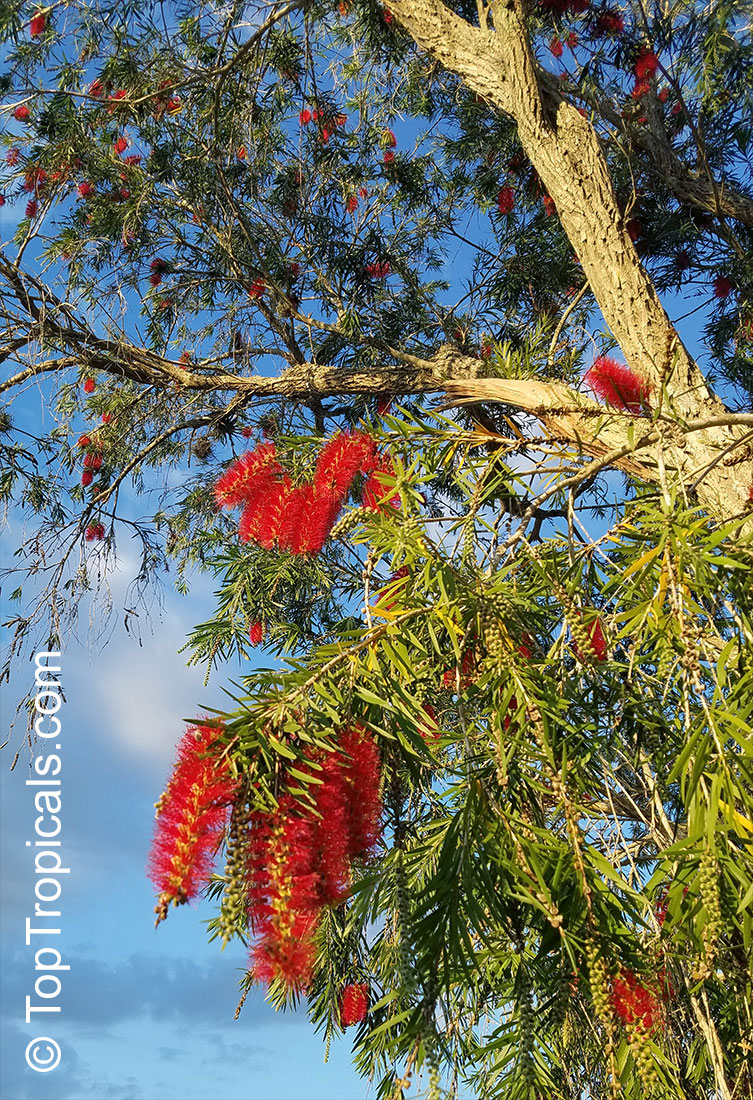
The new leaves of many bottlebrushes are very ornamental. The leaves are often colored and, in some species, they are covered with fine, soft hairs. Bottlebrushes make excellent garden plants. Most species are frost tolerant.The flowers can be spectacular and are irresistible to nectar-feeding birds and insects.
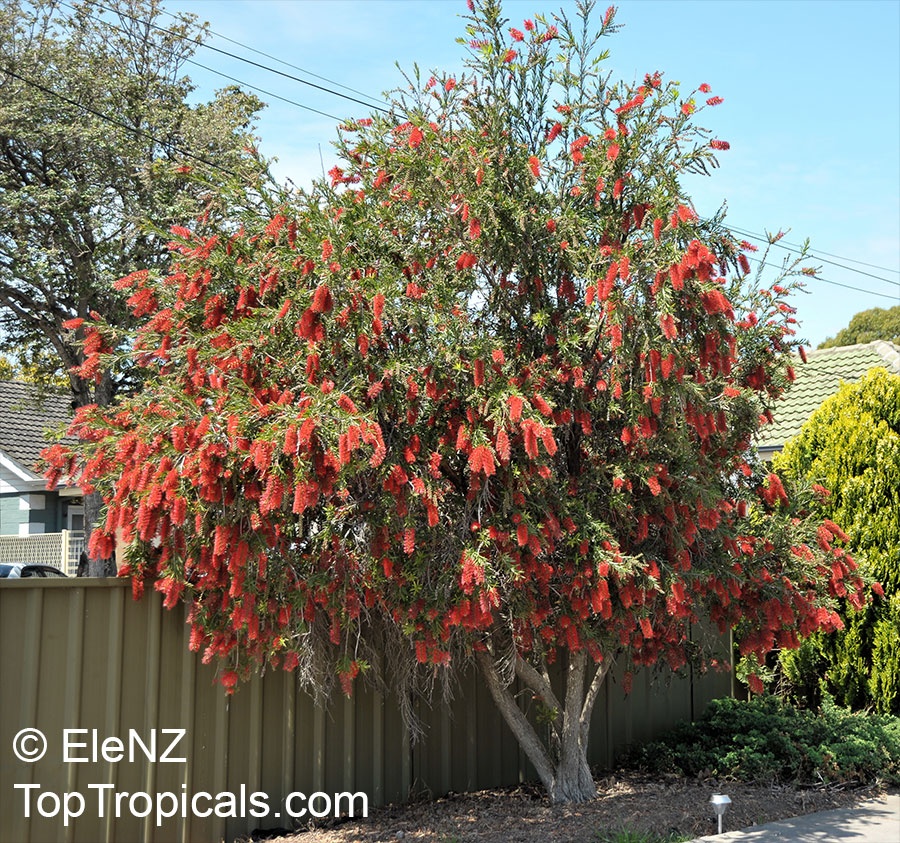
Many cultivars have been selected from natural variants and hybrids between species. Some of these are very good garden plants.And one of them is Callistemon Little John - Dwarf Bottlebrush.
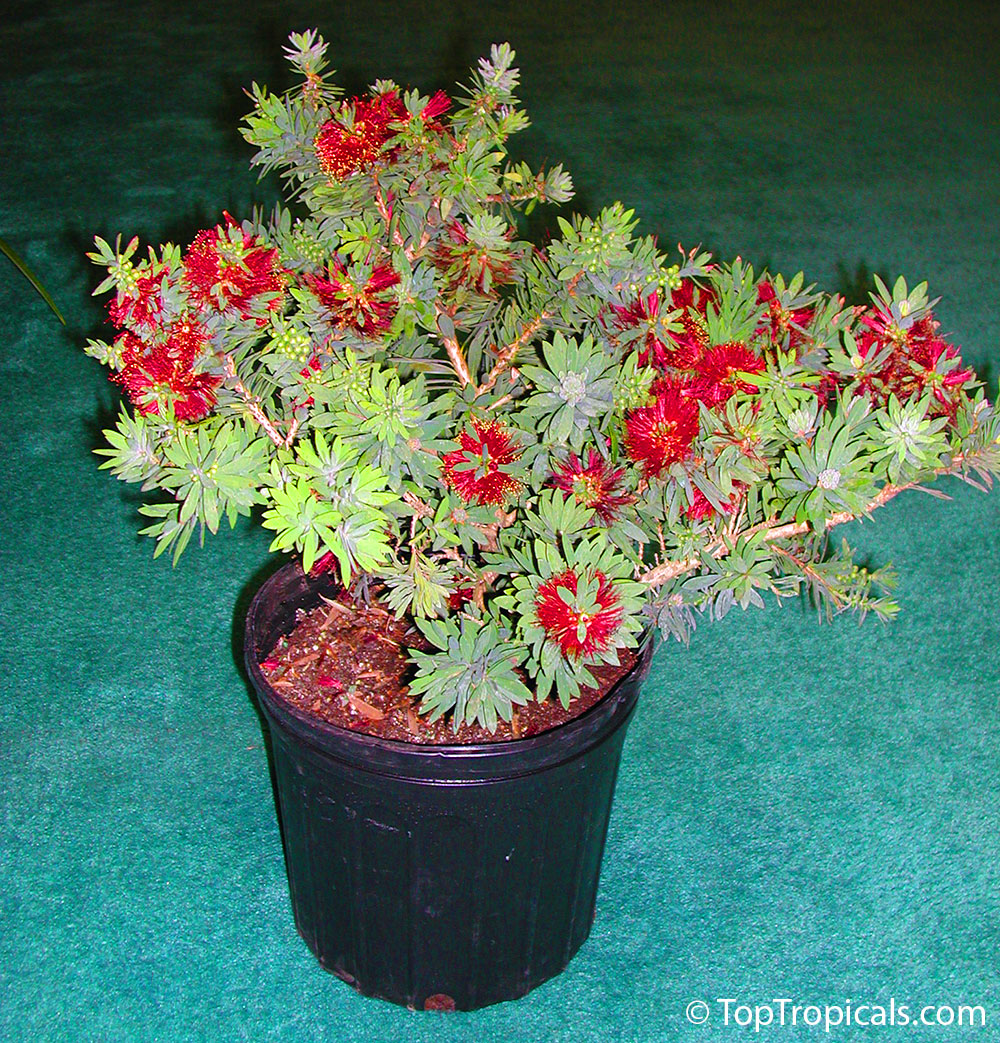
It is dwarf, evergreen, multi-stemmed shrub that grows to around 2-3ft tall and wide. A dense, rounded shrub with blood-red bottlebrush flowers that bloom from Summer to Autumn.
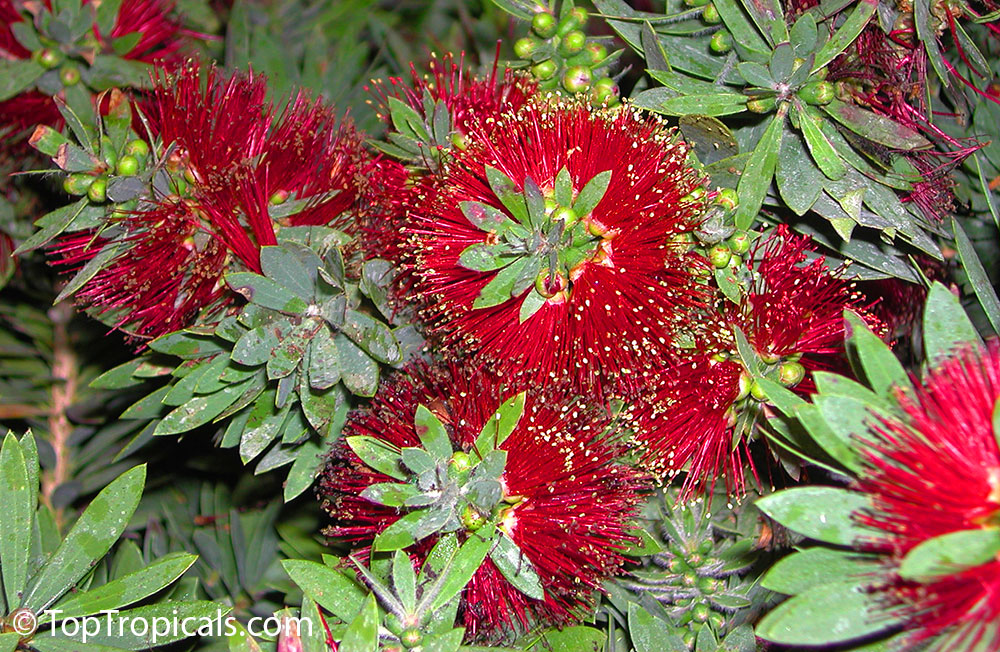
These flowers contrast well with dark green/grey foliage. Slow grower is perfect for a small garden. This is a slow to moderate growing cultivar with a mounding form, slowly growing 4-5 ft. tall and as wide after several years.

Callistemon Little John will thrive in a sunny position in well-drained soils. Callistemons are hardy, adaptable shrubs that will tolerate the poorest soils and withstand water-logging for extended periods. They are also strong against moderate coastal exposure and short periods of dryness.Hardy to 20-25F and reportedly can rebound after defoliation in temperatures down into the teens. This very attractive smaller Bottlebrush is great for attracting bees and hummingbirds into the garden. Little John plants are good for container growing. They also make excellent cut flowers.
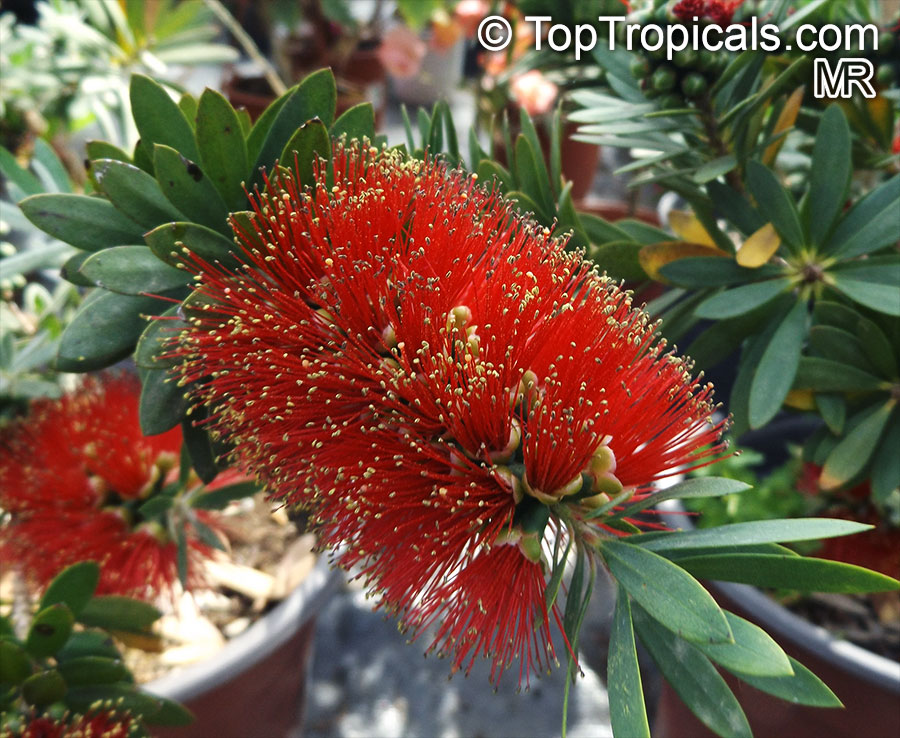
This plant was originally selected as a chance seedling in the 1980s by Ken Dunstan of Alstonville, New South Wales and was also called Callistemon Alstonville Dwarf, Tom Thumb and, at last, Little John. They said that the choice of this name was the song "Little John, Bottle John" by the American singer and songwritter Terry Grosvenor on lyrics by Laura E. Richard.
Little John was the 1986 Shrub of the Year in Australia and was originally introduced as a plant that only grew to 3ft tall but older plants can now be found in cultivation are typically 4-5ft with plants at the South Coast Botanic Garden in Palos Verdes California that have exceed 8ft in height.
Callistemon Little John can be propagated from seed which falls readily from mature fruit capsules when dry.
Pruning is recommended after flowering to remove most of the spent flowers and encourage an attractive growth habit.
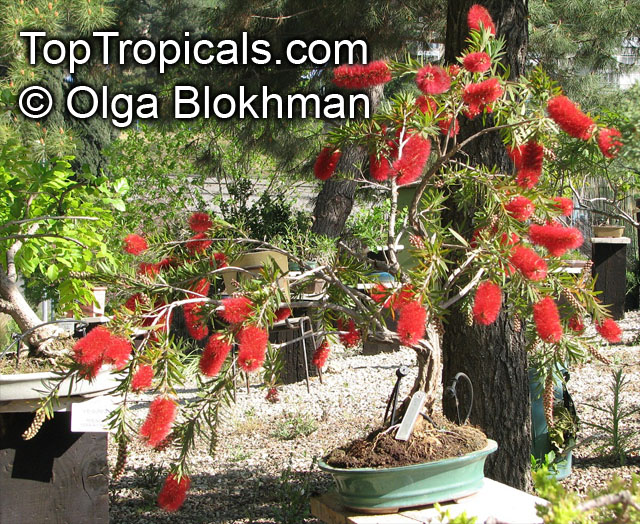

See more articles by Alex Butova

